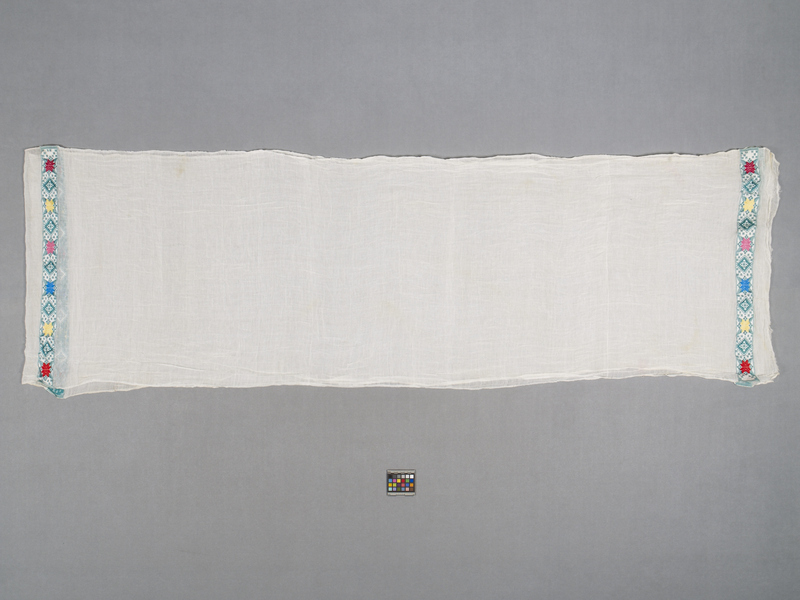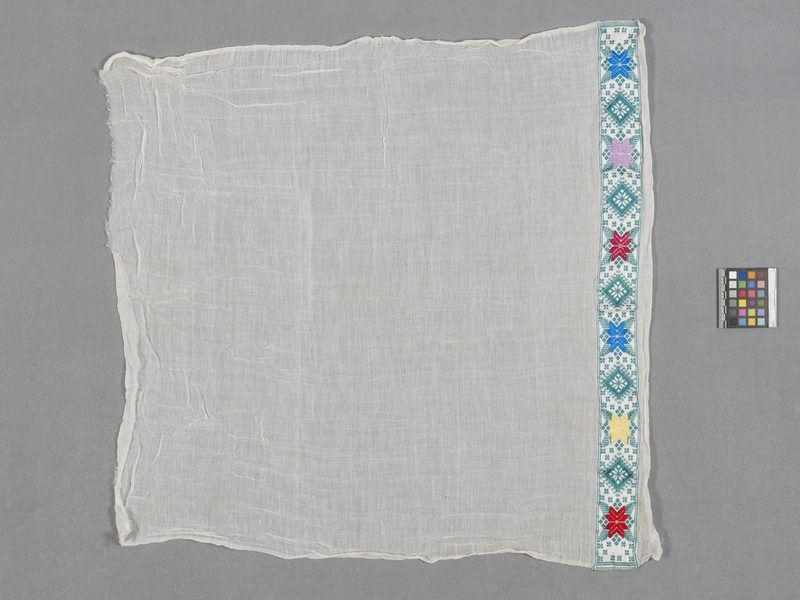Scarf Item Number: 3188/11 a-c from the MOA: University of British Columbia



Description
Three pieces (parts a-c) of finely woven, gauze cotton of different lengths and widths. Each piece has panels of embroidery in white and green, with diamond-shaped and floral motifs in yellow, pink, blue and red. Part ‘a’ is very long and thin, with an embroidered panel at each end and two near midpoint. Part ‘b’ is shorter and wider, made of two pieces of white cotton delicately sewn together in a long centre seam. Panels at each end. Part ‘c’ is the smallest and roughly square, with a single panel at one end.
History Of Use
Netela scarf, or shawl, for wrapping around the upper body. The cloth is traditionally woven by men; worn mainly by women, with a matching dress. Different religious and ethnic groups wear the netela differently. Amongst Ethiopian Orthodox Christians, the netela is worn as everyday wear as well as at church, on public holidays, at weddings and funerals. Muslim Ethiopians wear the netela only at weddings and funerals. Different folding and wrapping techniques indicate which occasion is being observed.
Specific Techniques
Like other Ethiopian shawls, the netela has historically been woven on a horizontal pit loom, usually by two male weavers at once. The colourful weft borders and embroidery are known as tibeb.
Item History
- Made in Ethiopia before 1971
- Owned by Edward Harvey and Lorna Marsden before July 15, 2016
- Received from Edward Harvey (Donor) and Lorna Marsden (Donor) on July 15, 2016
What
- Name
- Scarf
- Identification Number
- 3188/11 a-c
- Type of Item
- scarf
- Material
- cotton fibre and dye
- Part A
- height 76.0 cm, width 350.0 cm
- Part B
- height 155.0 cm, width 214.0 cm
- Part C
- height 73.0 cm, width 78.0 cm
Who
- Culture
- Amhara
- Previous Owner
- Edward Harvey and Lorna Marsden
- Received from
- Edward Harvey (Donor) and Lorna Marsden (Donor)
Where
- Holding Institution
- MOA: University of British Columbia
- Made in
- Ethiopia
When
- Creation Date
- before 1971
- Ownership Date
- before July 15, 2016
- Acquisition Date
- on July 15, 2016
Other
- Item Classes
- textiles
- Condition
- good
- Accession Number
- 3188/0011 a-c